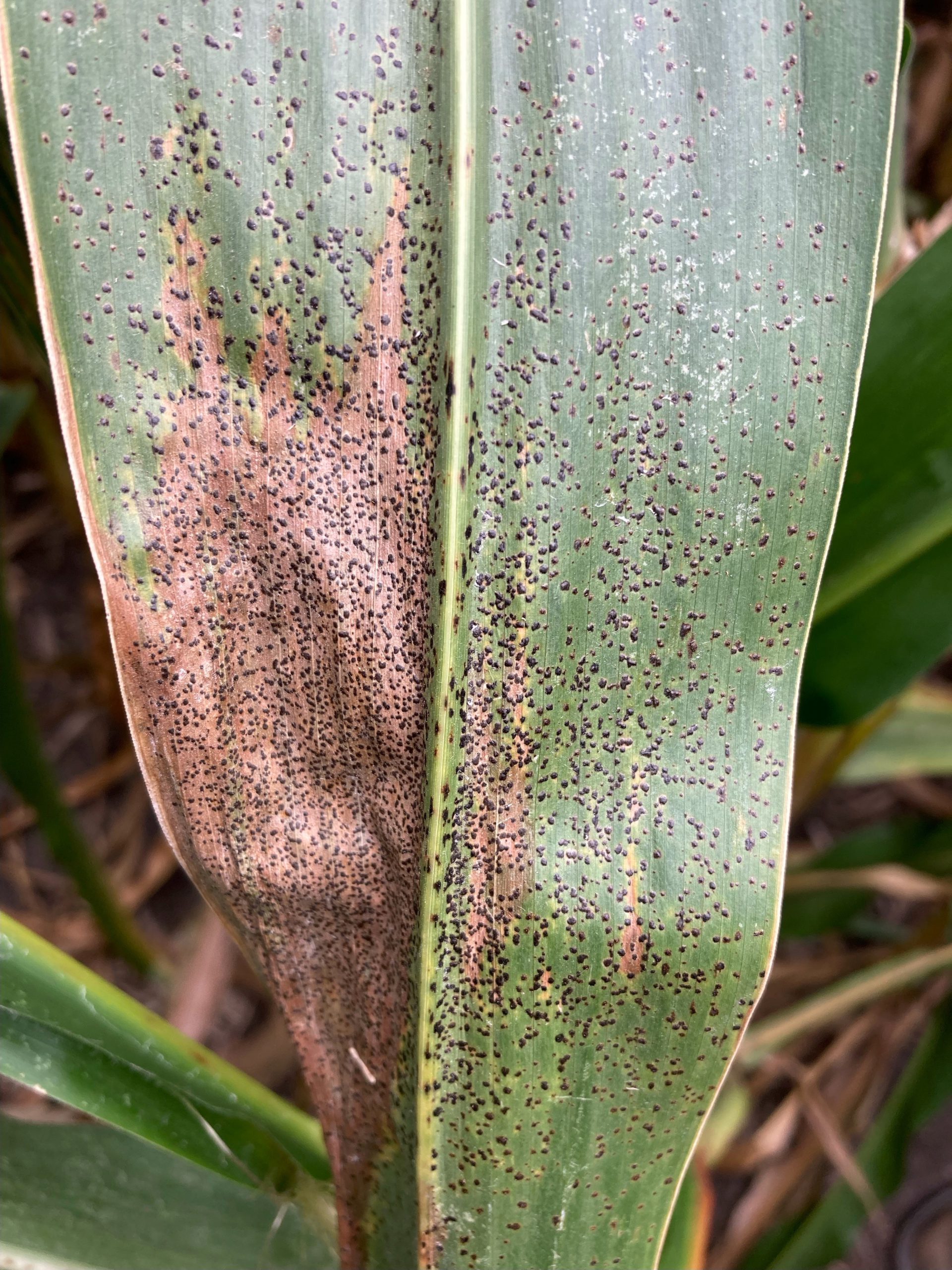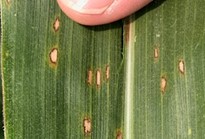PREVENT THE TOP THREE MID-SEASON DISEASES
TAR SPOT:

What causes it: Cool, wet weather. Temperatures between 60 and 70°F are ripe for tar spot development, along with humidity higher than 75%. Fields enter the danger zone after they’ve been exposed to weather that leaves moisture on leaves for seven hours or greater (this can be a long rainstorm, but also long-term fog or dew). Wind can also make a bad situation worse by dispersing the pathogen to other fields.
How to recognize it: You’ll see small, raised black spots on both upper and lower leaf surfaces—spots that can’t be scraped off. A tan or brown halo can also surround the black spots, creating a “fisheye” lesion.
Tips to reduce susceptibility: Avoid highly susceptible hybrids and choose one that minimizes your risk. Hybrids can range anywhere from fully susceptible (will show disease development the earliest) to partial tolerance (can hold off the disease for a week or two but won’t stop development).By studying tar spot early and identifying less susceptible hybrids, AgriGold was one of the first seed brands to publish tar spot ratings for its hybrids – identifying several options with exceptional tar spot tolerance. While it’s impossible to completely inoculate your fields against tar spot, you can still choose hybrids that give you the best chance at maintaining your yield.
GRAY LEAF SPOT:

What causes it: The fungus Cercospora zeae-maydis. It attacks lower leaves early in the year during prolonged warm periods (75-85 F) and humid (90%+) weather.
How to recognize it: Lesions first appear as small, hard-to-see pinpoints, but eventually the pinpoints mature into longer, more rectangular gray to brown spots. They expand parallel to major leaf veins and can be up to two inches long. Leaf tissue infection reduces a plant’s photosynthetic area, leading to lower carbohydrate production meant for grain fill, then more stalk rot and lower yields.
Tips to reduce susceptibility: Select more resistant hybrids (ask your local AgriGold agronomy expert), try out fungicides and manage residue with tillage or crop rotation to enhance breakdown. Growers should also keep plants clean from ear leaf up.
NORTHERN CORN LEAF BLIGHT
What causes it: The fungus Exserohilum turcicum. It attacks new leaves early in the year as spores produced by the fungus get wind-blown or splashed onto leaves. The disease favors wet, humid weather.
How to recognize it: Lesions first appear as tan narrow and long spots that are parallel to leaf margins. They expand into long “cigar shaped” tan to gray lesions that can be up to seven inches long. Symptoms will vary by hybrid, but can lead to large, fully covered areas on leaves that become dead tissue.
Tips to reduce susceptibility: Select hybrids with strong resistance to northern corn leaf blight you’re your local AgriGold rep for recommendations) manage residue through no-till or reduced tillage, rotate your crops and use preventative fungicides for in-season management. (Photo Courtesy of the University of Nebraska-Lincoln)
Sources:
Wise, Kiersten. 2010. Diseases of Corn Gray Leaf Spot. https://extension.purdue.edu/extmedia/bp/bp-56-w.pdf
Wise, Kiersten. Diseases of Corn Northern Corn Leaf Blight. https://www.extension.purdue.edu/extmedia/bp/bp-84-w.pdf



